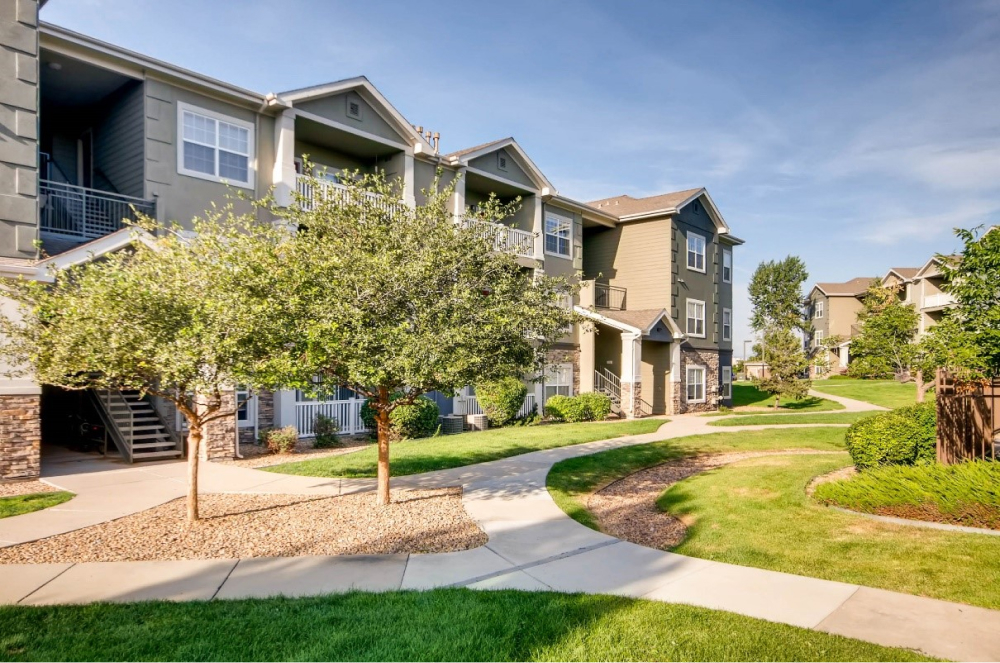Costly Commercial Real Estate Mistakes & Proposed Course of Action
Ninety percent of all millionaires become so through owning real estate. More money has been made in real estate than in all industrial investments combined. The wise young man or wage earner of today invests his money in real estate.” (Billionaire Andrew Carnegie). Beyond any doubt, real estate investment is amongst the fastest and safest ways to develop significant wealth and grow your net worth in this country. Whereas real estate, especially commercial real estate, is one such segment that offers great investment opportunities, here too, caution is very much required! Investing in commercial property stands high chances of yielding lots of financial rewards but at the same time several risks.
In a world where things move so fast, it’s not uncommon that individuals react somehow too quickly and arrive at rash decisions. Though generally, these miscalculated steps don’t cost much, when it comes to investment decisions, such “adventures” may cost dearly. Thus, with a view to keeping yourself safe from such risks, it is more than essential to learn from other’s experiences as well as clearly define which commercial real estate mistakes you should steer clear of!
Rod Khleif: Lessons from Losing staggeringly $50 Million to Rebuilding an Empire
For those who are not in the know, Rod Khleif is an adept real estate investor, building a portfolio of SFHs and apartment complexes that grew his net worth by $17M in 2006 alone. And then came the real estate crash and he lost a staggeringly $50,000,000 dollar portfolio. This seems like a cataclysmic event that no one could recover from, but not for Rod Kleif. Actually, after everything was turned on its head, Rod pulled himself up by his bootstraps and started rebuilding his empire. So, how did Rod recover and revive his real estate career? And what did he learn about finding true fulfillment along the way? Let’s cast a glimpse over his interview with Oliver Graf TV.

First of all, speaking of the cataclysmic loss of $50 Million, he shared, “I was underneath a rock for a few months. All you can see is my eyeball poking out the side of the rock because I was licking my wounds. I mean I truly thought I was set. It was the worst thing in the world for me to go through at the time”
When it comes to reasons behind failure, he confirmed, “The big reason that I crashed was I was focused on value.” Rod further explained, “the biggest thing that killed me, two things actually. One of them was the logistics of it. I thought I could manage it because I’d managed large house portfolios before. I had 500 houses in Denver, had a few hundred houses in Memphis, but it was the distance that killed me. Because if I had a maintenance request at one of my apartment complexes, everything there is the same. If I had a maintenance request, I could send a maintenance guy, we could stockpile parts and be in and out in an hour, no problem”.
“There’s that but also, most of my inventory was C class and a lot of my renters were in the construction business. They were jobbers, they were contractors which fell off a freaking cliff in 2008 and so it was the perfect storm,” he added.
Everything seems to be too overwhelmed to handle, yet Rod Kleif did manage to weather the financial storm. “I was able to recover from losing $50 million because truly, I thought I was set for life… What it was, was a really honed focus on remembering exactly what I wanted and why I wanted it.” To be more concise, it’s his goal-setting and visualization techniques that empowered the real estate investor to go through the rough patch. When it comes to his goal-setting system, Rod Kleif – genuinely and thoroughly – shared his own step-by-step formula, which is summarized as follows:
- Brainstorm list of everything you want in life
- Keep it measurable (# of years for each item)
- Pick the juiciest goal as well as top 3 for a year on a new sheet
- Write paragraph under each goal: WHY each goal is a MUST – not a should
- Collect pictures and visualize things you wish
- Journal on qualities required to achieve set goals
Furthermore, he suggested a precious piece of advice, “When you do your goals and you get close to achieving a big one, make sure you have other goals lined up because it’s never about the goals. The goals will push you. Happiness comes from progress and growth”.
There is no doubt that failure is an inevitable thing, especially in the business landscape; whereby instead of being depressed, let’s change your mindset, leading a positive mental shift to drive tremendous success in the future. “Your success in anything—I don’t care what it is, if it’s real estate [or] entrepreneurship—is literally 80% to 90% your mindset and your psychology and only 10% to 20% the real estate mechanics or the entrepreneurship or the business development. It’s really mindset. I changed my mindset, and thanks to that, I 10Xed my income.”
Throughout the interview, Rod Kleif did present several useful sharings such as his weekly planning process, the overview of the apartment buying process, the current multifamily landscape, some recommendations on specializing in one market, or even Rod’s favorite tech tools for real estate investing. Yet, at the end of the day, he summed up with sensible advice for aspiring multifamily investors: “Educate yourself, number one, and then take action. Just get out of the comfort zone, go take action”
“When I interview, that’s one of the questions I ask … if you could tell your 21-year-old self something, what would you tell yourself? … [in his case] That’s always, I would have started sooner, I would have gone bigger”
Top Critical Commercial Real Estate Mistakes In 2020 and Beyond
The commercial real estate market is dynamic and various aspects that determine the rent earning potential and even property price rise, change from time to time. To outperform within this challenging landscape, let’s take a look at some of the common traps or even oversights that investors should avoid when taking investment decisions.
Mistake #1. Solely Focusing on The Returns
When there exist several investment opportunities, a large number of commercial real estate investors just automatically prefer the project with the highest ROI (return on investment) without looking at any other factors. Since the four ways to earn good money in real estate comprise of cash flow, appreciation, equity growth, and tax benefits, one cannot afford to just look at returns. Actually, contrary to the popular belief, ROE (return on equity) does provide a better measure of the speed of wealth creation and the tax efficiency in doing so.
As regards the cash flow factor, investors can work on decreasing expenses and/or increasing revenue. On the expense side, it is more than vital to have your eye on the maintenance costs, the management fees, together with other expenses that cannot be passed through to the tenants and discuss possible ways to reduce these expenses. On the revenue side, it is a “must” to explore whether the lease rate can be increased, what can be done to decrease vacancy rates, whether additional leasable space can be added as well as whether additional revenue streams can be added from cell phone tower leases or billboard leases on the property.
Plus, in terms of appreciation, since the majority of investors have no control over the general market, it is of utmost importance to extensively review those areas of appreciation that can be controlled. Should the property include some vacant land or the parking ratio be significantly higher than needed, is it possible to add a bank drive-thru, restaurant pad site, or other development? As long as there is still room to increase rental rates when tenants move out, this is another factor under investors’ control which will probably impact appreciation in a positive way.
When it comes to equity growth, the investors are better off thoroughly reviewing the financing and clearly determining if the mortgage payment is just interest or also includes principal and what amortization schedule is being adopted to calculate the principal payment. Whereas typically, the equity growth is best built by making principal and interest payments on the mortgage over a shorter amortization period, for cash-flow purposes, a 25-or-30-year amortization may be used in lieu of 10 or 15 years.
Last but not least, with regard to tax benefits, it’s worth noting that investors not only derive the benefits of depreciation of the building and equipment, but may also receive interest deductions.
On the flip side, investors may also sometimes receive what is called “phantom income” – projects can generate phantom income when they create taxable income for investors without generating comparable cash flow, typically because all or part of the operating income is used to make principal payments, which, unlike most interest payments, are not tax-deductible. As a result, an investor will owe tax on this income, despite the fact that he or she isn’t receiving cash to help pay the tax. Hence, it proves crucial to understand if “phantom income” is likely to be received in a specific project and what plans there are to mitigate this issue for the investors.
Mistake #2. Misunderstanding the Local Market
Several commercial real estate investors – especially the first-time buyers – are at risk for buying the wrong property at the wrong time. Many of them may just wish to get into the market so as to diversify their investment portfolio. And whilst it’s undeniable that real estate does tend to go up over time, this doesn’t mean that you should rush into a decision – even when the market is performing well. With the aim to avoid such a mistake, you are required to thoroughly understand the market and sub-market, which includes in-depth research and analysis.
Not only should all investors visit the property personally, but also “tour” the neighborhood where the property is located. Prior to visiting the property, it is highly recommended to look at Google Earth or a similar platform to observe the property from above and look at the adjacent property uses as well as the larger neighborhood. What’s more, since property values are determined mainly by local market conditions like rental rates, occupancy levels, competitive space supply, and prevailing demographic trends, it’s time to obtain some local demographic statistics – typically, existing population, projected population growth, projected job growth, average household income or median household income.
Actually, there are many cities or counties that have an economic development authority or similar agency collecting this information and making it readily available at a single place. Besides, you could possibly find out much of this information through the U.S. Census Bureau.

Moreover, in case the commercial property is an office building, you should ask yourself whether or not you would wish your own company to have an office in the building. If the answer is going to be “no”, then this may be an investment opportunity that you should avoid. But if “yes”, it is a “should” to explicitly identify why – the below questions may help you out!
- Which specific features/aspects of the building would attract you to establish an office there?
- Is the location ideal?
- Is the access easy to get in and out of?
- Is there plenty of parking lots?
- Are there any other tenants in the building that use more than their proportionate share of parking spaces?
To the extent that this is not possible or practical to visit the property in person, there remains a myriad of real estate agents and property consultants throughout the country that are available to provide you with additional information about the demographics of the area as well as trustworthy sources or industries for projected job growth, major employers in the locale, and household income information.
Mistake #3. Not Looking at Tenants & Their Earnings
If you are investing in a building or another commercial real estate that already has tenants, then let’s take a close look at the tenancy!
In case that almost all the essential financial statements on the underlying tenants are luckily available and have been provided, it is high time that you took a review over the financial well-being of the tenants.
Nevertheless, more often than not, financial statements are not available from the tenants. In this event, it is suggested by the Law Offices of Kirk Halpin & Associates, P.A. to compile a chart categorizing tenants of the building by industry, such as information technology, medical, non-profit, manufacturing, education, government contracting or real estate, etc. To the extent that a substantial portion of the building is leased to tenants in one industry, then a downturn in that industry could have devastating results on the returns!
Another notable key when it comes to underwriting the current tenants is to review the rent roll to determine when various leases expire. Obviously, it would be ideal if the expiration dates of major don’t lapse in the same year. But, if many leases expire within a few months of each other, it should be anticipated that it may take a while to replace the tenants and restore cash flow. Whereby, there need to be assumptions in the pro forma of lease marketing down-time and time needed for a new tenant to fit out its space before it begins paying rent.
In addition, to avoid any potential conflicts, you’d better off determining whether there are any personal guarantees of the leases from the principals of the companies that are tenants in the building.
Mistake #4. Lacking Cash Reserves for Unexpected Expenses.
One of the biggest mistakes commercial real estate investors commonly make is not planning sufficient cash reserves available for unexpected expenses. This is especially true for multi-tenanted office and retail properties.
Let’s take an example. There is an investor who has owned a multi-tenanted office building for years and it has cash flowed beautifully. Instead of putting some of the positive cash flow into a reserve account for future needs, he puts it all into his back pocket. Then one day, one of his larger tenants moves out and the property no longer cash flows like it once did; therefore, the owner is forced to contribute his own cash to keep the mortgage current.
He would like to get the vacant space market-ready but to do the tenant improvements and pay a leasing commission will cost him more money than he has in his savings. Since he tries to avoid paying a leasing commission by doing the leasing himself, space remains – and years pass with an under-performing property.
The lesson to note down here is that it didn’t need to- should the owner have established a reserve account for the eventual cost of tenant improvements and leasing commissions he would have had the funds to get his property re-tenanted and his real estate investment still “has cash flowed beautifully.”

Other Commercial Real Estate Mistakes to Consider
Mistake #5. Flying “Solo”
Undoubtedly, real estate investing is a “team sport”. Whether you are a seasoned investor or a beginner, you’re better off teaming up with an experienced real estate agent, mortgage broker, real estate attorney, and other professionals that know the market and the process of buying property.
A great real estate agent will enable you to find a terrific property at a fair price. A great mortgage broker will work to understand your goals in order to find properties that match your needs. Furthermore, purchase contracts are typically complex legal documents. Both your broker and attorney will explain the fine print, ensuring you pay a fair market price. Besides, a great real estate investment coach will empower you to magnify investment success. Actually, a complete team also needs a property inspector, tax accountant, property manager, contractor, stager, interior decorator, real estate photographer, architect, and more.
After all, a team is always stronger than any one member. Thus, let’s surround yourself with an army of experts since this often is the difference between real estate success and failure!
Mistake #6. Not Preventing Partnership Differences
Several real estate investors find larger and more lucrative deals by forming partnerships. Going into such a relationship blindly, nonetheless, can result in disastrous consequences. Tensions seem to be inevitable since colleagues try to reach agreement on purchases and improvements, division of labor, and exit strategies. There exist numerous real scenarios where differing tax consequences for partners led to disagreement about when to sell.
To avoid this, partners should create and sign a legal contract that covers the business plan for every property, which can account for a time horizon for execution, specifics about management, the division of responsibilities, as well as exit routes in the event of death, bankruptcy, divorce, and other potentially troublesome situations. Having such an agreement in place can potentially diffuse disputes down the road!
Mistake #7. Disregarding the Strategy of Diversification
Although commercial real estate does present different challenges than other forms of investment, not “putting all of one’s eggs in one basket” is still a good rule of thumb. Actually, diversification can go a long way toward mitigating some of the risks inherent to commercial real estate investment – and this can be done by purchasing various types of properties, as well as investing in different geographic locations.
For individual investors who find it unfeasible for looking to purchase properties on their own, for a more diversified real estate portfolio, they can turn to a private real estate fund that will charge fees but can reduce risk and generate higher yields.
Mistake #8. Following Only Your Gut & Letting Your Emotions Take Over
Understandably, it’s far too easy to get emotionally attached to an investment. Yet, as the saying goes, “It’s not personal, it’s business.” Whereas gut feeling and instinct do play an important role in real estate investing, so does data!
As already discussed, there is so much information that can and “must” be analyzed – let’s say, market data, neighborhood data, demographic data, trends, property data, cash flow, rental projections, etc. Think intuitive right brain versus logical, analytical left brain: Neither side is better. Rather than having a single focus on either side, it’s better to balance it out and get the best of both worlds.
The Bottom Lines
Buying and managing an investment property, be it houses, multifamily units, or commercial real estate, is by no means a straightforward job. Whereas investing in commercial real estate does promise lucrative earning opportunities, you must know the right steps to take as well as the crucial ones to avoid throughout the investment endeavor to maximize all this potential!









